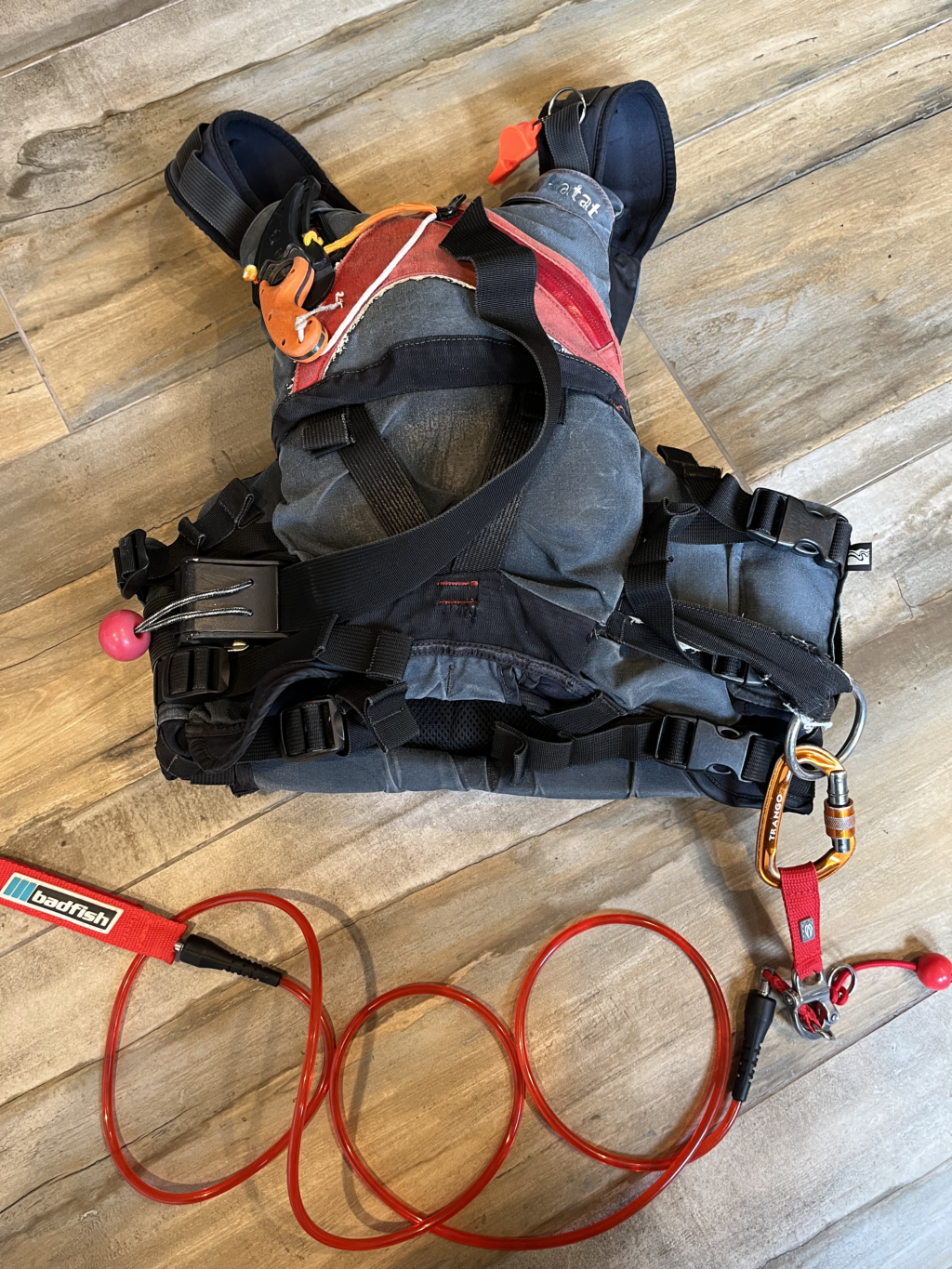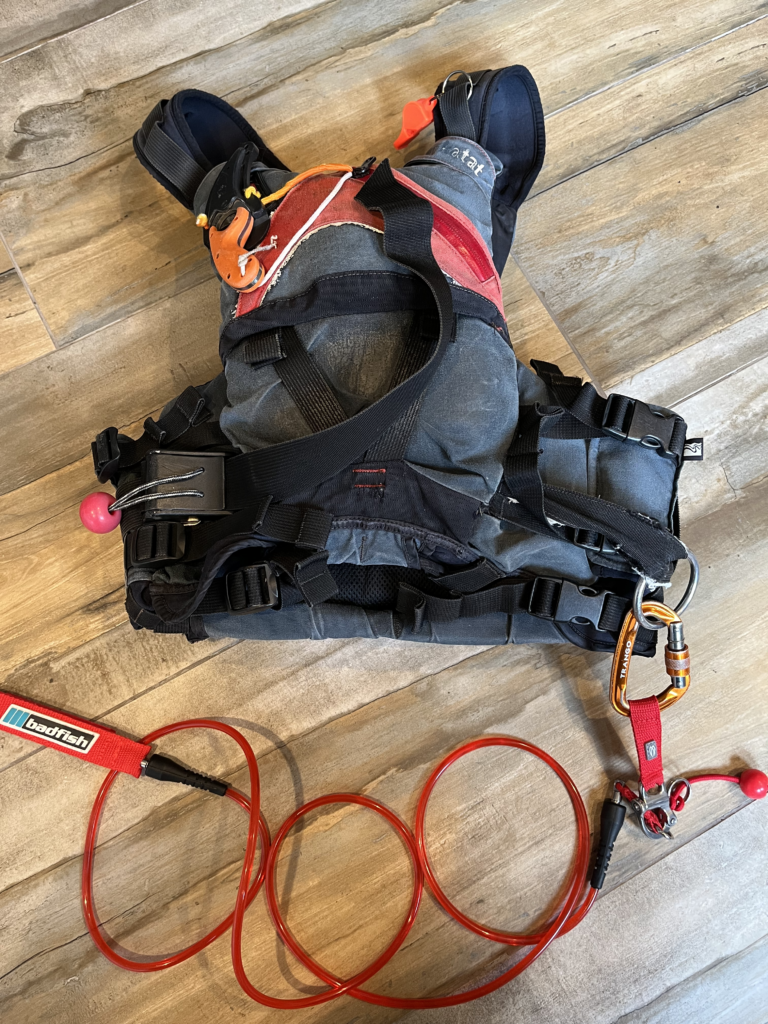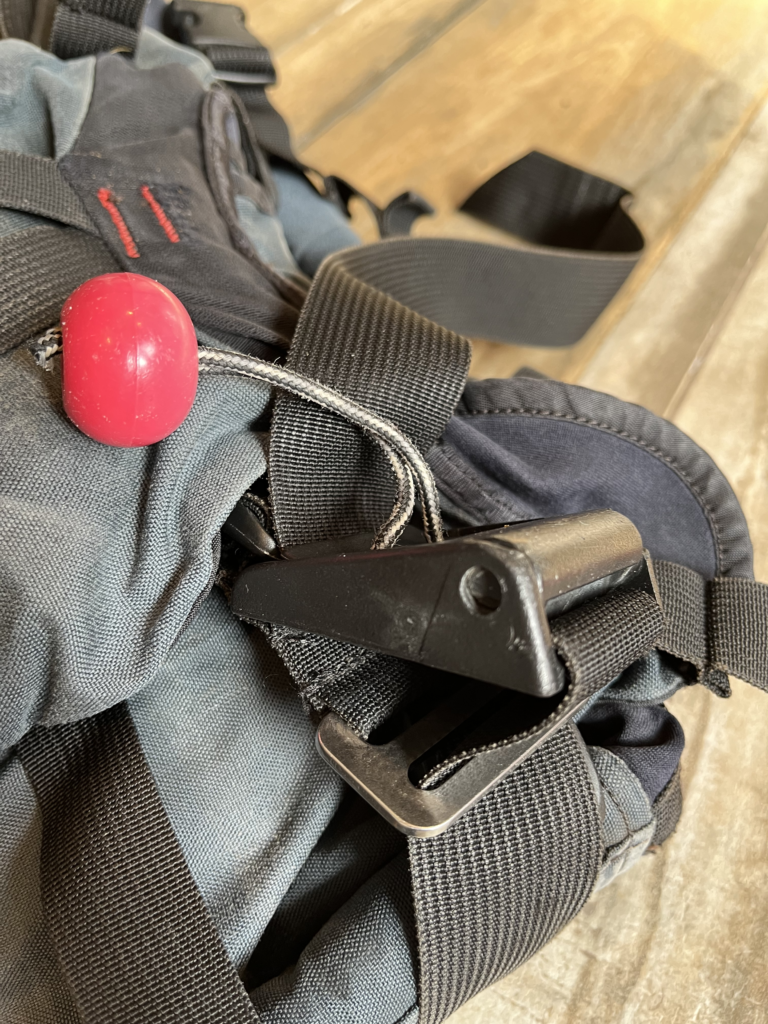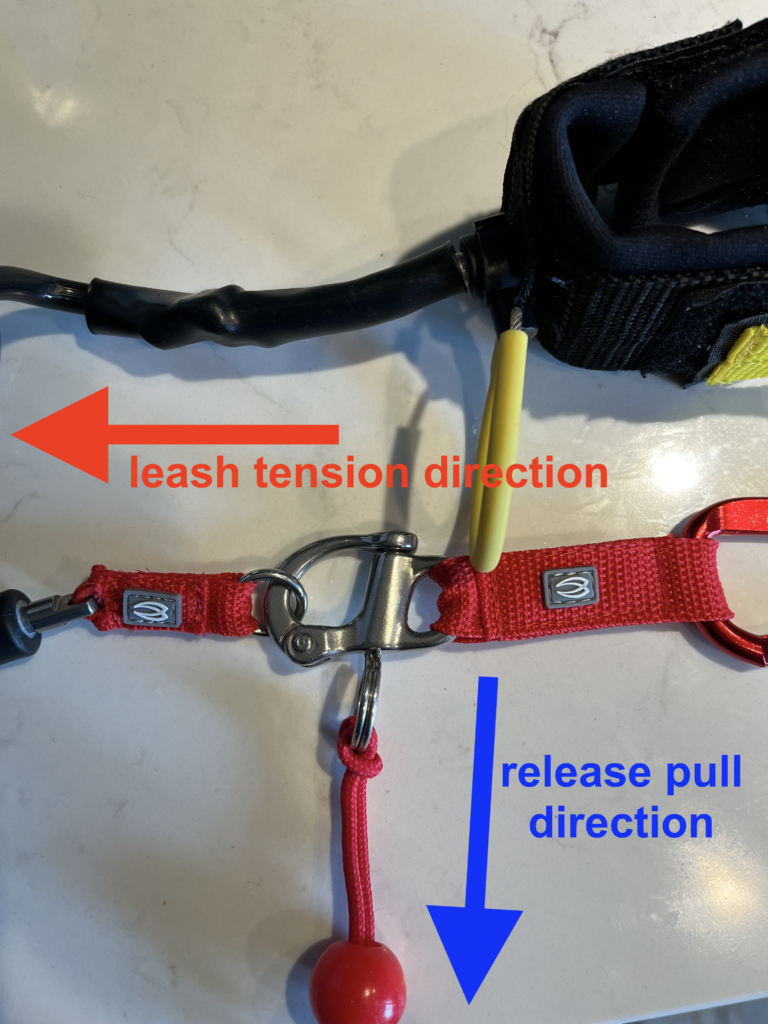
Testing my leash setup
Declaimer: this is not a gear review, nor a recommendation about what you should use for a leash in the river. Instead it is my personal conclusions drawn from testing I did myself and experiences I’ve had. I recommend doing your own testing of your leash setup to decide for yourself whether or not it meets your needs.
My leash setup uses a Badfish ReLeash connected to the quick release chest harness o-ring on my Kokatat Maximus Centurion Rescue PFD. I moved the o-ring from the center of my back, to one side of the PFD and connect the ReLeash there. This allows me to have two release systems, one on each side of my body. However, because I’m a goofy footer, I had to flip the chest release harness on the PFD so its release is on my left side instead of my right. As a third and last resort option, attached to my PFD I have a CRKT Bear Claw knife to cut my leash.

For my tests, I tried releasing both the ReLeash and the PFD chest harness from various tensions:
1) 4 lbs
2) 9 lbs
3) 25 lbs
4) 43 lbs
5) 160 lbs (my full body weight)
As a final test I tried cutting my leash at 43 lbs.

Maximus Centurion Rescue PFD quick release
The quick release on the Maximus Centurion Rescue PFD can be adjusted to withstand different amounts of force before the strap slips through the buckle causing it to release on its own. I choose to run the strap through the metal buckle once, and then the plastic release lever. With anything less than this amount of friction on the strap I’ve found it works itself loose over the course of a surf session.

With this setup, I found the strap did not fully release at 4 or 9 lbs of force. The amount of friction between the plastic lever, the metal buckle, and the fabric loops were too much for these light forces. At 25 lbs of force, the strap was able to fully release and did so with ease at 43 and 160 lbs of force as well. I didn’t notice any real difference in the difficulty to pull the release between any of these forces. It felt almost as easy to pull the release at 4 lbs as it did at 160 lbs.
I found it important to know that at low forces my rescue PFD release won’t fully separate me from my leash. If I were swimming downstream approaching a hazard and wanted to separate myself from my board before reaching the danger, my PFD release might not be a good idea because there might not be enough tension on the leash. A similar situation could happen while being swirled in the eddy with your board.
Badfish ReLeash
The Badfish ReLeash was able to release with ease at 4 and 9 lbs of force. I even found it able to release with no tension in the system. It also released at 25 and 43 lbs of force. However, I did notice that the act of pulling the release got harder as the amount of force on the leash increased. At 160 lbs of force I found it difficult to pull the release with just one hand.
I also discovered an issue with the 2023 or older ReLeash. The keyring loop that connects the release ball to the pin can become partially unscrewed (a common occurrence for me). When this happens at 160 lbs of force, the keyring itself will fail leaving you unable to release the leash. This issue is fixed with the 2024 version of the ReLeash which has the keyring welded shut. If you have a ReLeash that does not have a welded keyring, I strongly suggest you get a new one.

I was surprised to find it harder to pull the release as the amount of force on the leash increased. But looking at the design of the shackle, it’s easy to see why: the direction of the force is perpendicular to the direction that that release pin slides. It simply means that the more force the leash has, the harder it’s going to be to pull the release. In theory, there will be a point where it’s too difficult to pull the release at all. This issue isn’t isolated to the ReLeash either. All of the ocean style leashes that I’ve seen with a release system have the same issue: the direction of force is perpendicular to the pin that releases the leash. I’ve even seen a fellow surfer unable to release their ocean leash when their board was caught downstream in the current.

The Badfish ReLeash has a couple of intentional failure points meant to break at 300 lbs of force. The first is the carabiner (which I often replace with a locking carabiner used for rock climbing, maybe a bad idea), and the second is the single stitch 2″ section of webbing between the carabiner and the release shackle. I didn’t feel comfortable testing the failing point of either of these items, but I do feel that at 300 lbs of force the ReLeash would require a lot of strength to pull the ball to release. It is nice to know that the whole system should fail at a point where it is unlikely I would be able to release it myself. There is a question in my mind however: between 160 lbs and 300 lbs how hard would it be to pull the release?
Cutting the leash
I’ve never cut a leash before. To my surprise, they cut VERY easily. Once the knife started to cut into the leash, the whole thing instantly failed. I didn’t need to saw or struggle to cut it. This method of freeing myself from my leash seems like the most difficult to accomplish, but it’s good to know that once the knife starts to cut the leash snaps immediately.
My conclusions
After all this testing, I feel comfortable with my leash setup but only with the upgraded version of the Badfish ReLeash. I have one system that works great when the tension on the leash is low, and another that works great when the tension is high. I feel like I have a better understanding of when I should use each release. Still, I would love to see more testing around leashes in the river. I would like to know how much force is actually put on the leash in various scenarios. I’d also like to know if cold water effects these release mechanisms. I’d also love to find a single solution that would allow for both low and high tension releases.